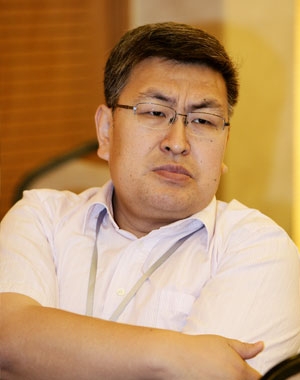
Wang Zhenyuan, deputy director of Forensic Medicine Department of the School of Medicine of Xi’an Jiaotong University, professor, doctorial supervisor, leader of Pathological Subject of Medicine Department. He was born on February 18, 1964. He studied clinical medicine in the former Xi’an University of Medicine Science (the present Medicine School of Xi’an Jiaotong University) from September, 1981 to July, 1986. He joined the Chinese Communist Party in 1985, got the medical doctor degree in 2003, and did post-doctor research in Medical School of Indiana University of America from 2005 to 2006. He has been engaged in Teaching, Researching Legal Medicine, and Forensic Service for a long period. He has been presided two National Natural Science projects and six provincial level projects, and published more than 80 papers (22 papers are recorded in SCI). He presided and participated editing 13 monographs textbooks, and received many textbooks, teaching and researching awards of national, provincial and school levels. He has fostered near 20 doctors and graduates. He is also a Council Member of International Association of Evidence Science; a Council Member of Chinese Association of Legal Medicine, and the vice director of Legal Medicine Pathology Professional Council; a Council Member of Chinese Higher Legal Medicine Association; the technology expert of the Ministry of Public Security; the expert of Judicial Technology Identification Council of the Supreme People’s Court; the expert of Medical Negligence Identification Council of the Medical Association of Shanxi Province and Xi’an District; the Special Invited Criminal Investigation Expert of Provincial Public Security of Shanxi province; the counsel expert of Xi’an Politics and Law Committee. Forensic Medicine Pathological Subject and Neuroscience are his main research areas.
He published many research papers as the first writer or corresponding writer, part of them are: ①.Deduce Death Time by the use of FTIR Spectroscopic Technique, Chinese Journal of Forensic Medicine, 2011(2), 103-108. ②. Supplementary Pathway for Vitality of Wounds and Wound Age Estimation in Bruises Using the Electric Impedance Spectroscopy Technique, Journal of Forensic Sciences, 2011,56(4):925-929. ③. Stress impairs consolidation of recognition memory after blocking drug memory reconsolidation, Neuroscience Letters, 2011,501(1):50-54. ④. Attenuated total reflection Fourier transform infrared spectroscopic investigation of postmortem metabolic process in rat and human kidney cortex, Applied Spectroscopy,2010,64(3):268-274. ⑤Estimation of Postmortem Interval in Rat Liver and Spleen Using Fourier Transform Infrared Spectroscopy, Spectroscopy Letters, 2009, 42(2):108–116. ⑥.Analysis of postmortem metabolic changes in rat kidney cortex using Fourier transform infrared spectroscopy, Spectroscopy, 2008, 22 (1): 21–31. ⑦Genetic Polymorphisms of 15 STR loci in Han Population from Shaanxi (NW China), Forensic Science International, 2005, 147(1):88-91.

